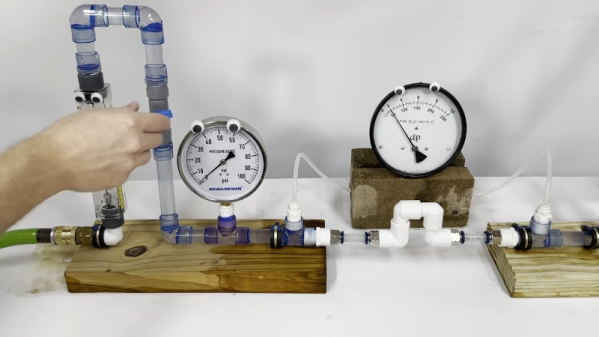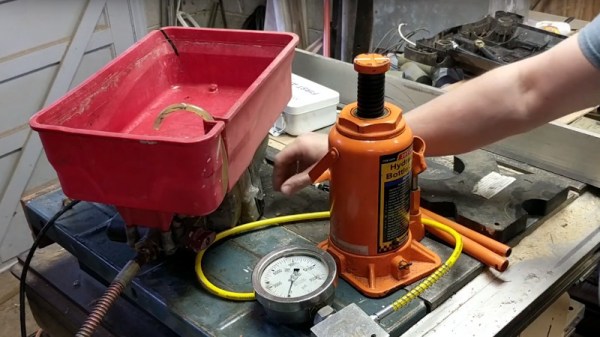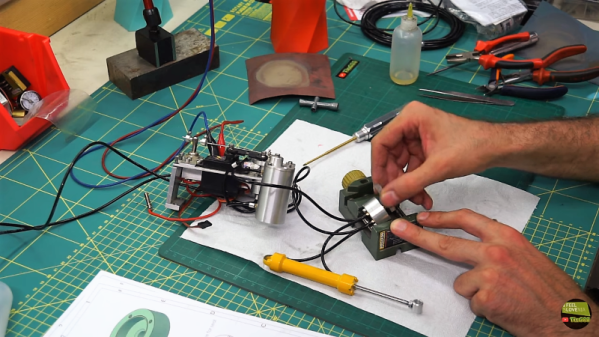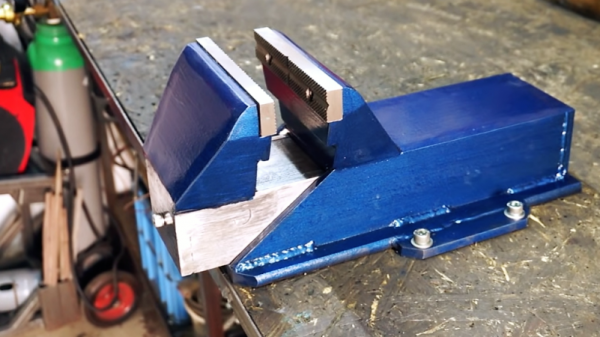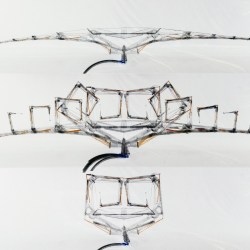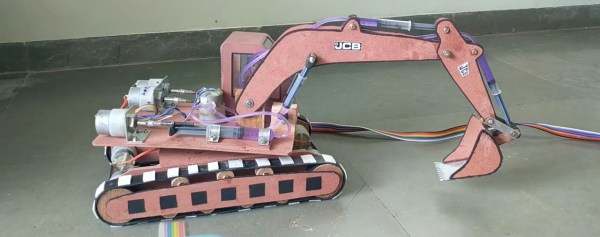A press can be one of the most useful additions to a workshop, once you have one you will wonder how you ever coped beforehand when it came to all manner of pressing in and pushing out tasks. An arbor press with a big lever and ratchet is very quick to use, while a hydraulic press gives much higher pressure but is extremely slow. [The Buildist] missed out on an arbor press, so turned his eye to improving the speed of his hydraulic one. The solution came from an unexpected source, an airless paint sprayer that had come his way because its valves were gummed up with paint.
An airless paint sprayer is simply a high pressure pump that supplies paint to a nozzle, and that pump is easily repurposed to pump oil instead of paint. Testing revealed it could produce a pressure of 3000 PSI, which would be plenty to move the hydraulic jack even if the hand pump would be needed to finish the job when higher force was required.
What follows over two videos is a masterclass in hydraulic jacks, as he strips down the jack from his press, and modifies it not only to take an input from the pump, but also to run inverted by the addition of an oil reservoir pick-up pipe. Along the way we learn a few useful gems such as the fact that a grease gun pipe is the same as a hydraulic pipe, but much cheaper.
The result is a jack that extends quickly, and has the pressure to do most pressing tasks without the hand assistance. He crushes a drinks can for effect, then pinches the end of a piece of pipe, because given a press, why wouldn’t you! Take a look at both videos below the break.
Continue reading “Manual To Hydraulic Press, With A Paint Sprayer” →

